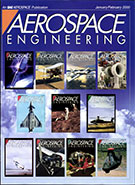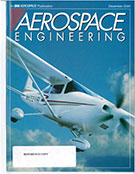Technical Paper
A MACH 6 External Nozzle Experiment with Argon-Freon Exhaust Simulation
1989-09-01
892315
A scramjet exhaust simulation technique for hypersonic wind tunnel testing has been developed. Mixtures of Argon and Freon correctly match the inviscid simulation parameters of Mach number, static-pressure ratio, and the ratio of specific heats at the combustor exit location; this simulation is accomplished at significantly reduced temperatures and without combustion.








